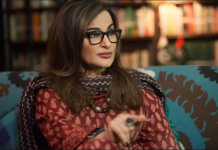DM Monitoring
Bengaluru: India has reported the highest number of deaths on a single day due to COVID-19 since its peak on September 19 last year – of 1,184 people. The total number of new cases also remained above the 2-lakh mark for the second consecutive day on April 15, with 2.17 lakh, taking India’s total number of active cases past 1.5 million. This is the the eighth record daily increase in the last nine days. Times of India reported that no less than 14 states and union territories reported their highest daily tallies ever since the pandemic’s start. Maharashtra, however, logged its second-highest daily spike, of 61,695 cases. The worst affected city at present is New Delhi, which overtook Mumbai yesterday with a staggering 17,000+ new cases in 24 hours. It’s also third on the list of states by number of deaths, behind Maharashtra and Chhattisgarh and ahead of Uttar Pradesh, Gujarat, Karnataka and Madhya Pradesh.
The case of Chhattisgarh seems particularly concerning. Its government, headed by Chief Minister Bhupesh Baghel, has previously flagged a shortage of vaccines supplied by the Centre, even as healthcare facilities in various districts reported being unable to cope with the surge. The Print reported on April 15 that too many people are dying of the disease in hospitals in Raipur, the state capital. Even with hearses working overtime, some institutions have taken to ferrying corpses 10 at a time on trucks to cremation grounds. And before the trucks ere hired, NDTV reported that the bodies had been piling up in mortuaries, and not even inside the freezers.
Raipur currently has over 26,270 active cases, and has thus far reported 5,187 deaths. On April 14, the Union health ministry shared data showing that 10 states are reporting 82% of India’s cases; Chhattisgarh was third on this list. According to the state government’s own data, the number of deaths has increased 2,000% in the last 30 days.
“They are dragging the bodies like animals from the mortuary to the truck and then from the truck onto the funeral pyre,” Umesh Kumar Vishwakarma, who watched his father’s body being loaded onto a truck headed for a funeral pyre in Naya Raipur, 20 km from the hospital, told The Print. “There is no respect for human life.” But Raipur’s additional municipal commissioner Pulak Bhattacharya has defended the hospitals’ plight saying people don’t take the virus and its effects seriously, don’t follow COVID-appropriate behaviour, and that patients aren’t admitted to the hospitals until their conditions are critical.
India’s second COVID-19 wave has thus far been little like the first, particularly in magnitude. Speculation by experts has focused predominantly on neglect of appropriate behaviour and new variants of the novel coronavirus as the causes. The former has been exemplified by the Kumbh Mela, an ongoing Hindu festival on the banks of the Ganga river in Haridwar, where nearly 3 million devotees have congregated with few or no safeguards. As a result, Haridwar alone has reported over 2,000 cases in the last week.
Epidemiologist Giridhara Babu has said the country could add 40 lakh more cases by May 1, that the case load could increase by 3-4 lakh per day by May 5, and that 10 states have an effective reproduction number greater than 2. The case fatality rate appears to be lower than it was at the height of the 2020 epidemic. However, Murad Banaji has discussed (in an article to be published later today) that even the most optimistic estimates suggest India has missed 5-11 lakh deaths due to COVID-19 thus far, including in last year’s outbreak. This implies we are missing a significant fraction of deaths, and potentially underestimating the deadliness of this year’s outbreak as well.
There is also evidence already that some states may not be reporting correct death data. Madhya Pradesh is a case in point. “There were 37 bodies waiting to be cremated on April 12 at Bhopal’s Bhadbhada facility whereas the Madhya Pradesh bulletin listed only 37 deaths in the whole state on that day. Similarly, on April 8, 35 bodies had to be cremated in Bhopal alone but the bulletin specified only 27 deaths; on April 9, it was 35 bodies v. 23 in the bulletin.”
Given its status as the ‘world’s pharmacy’, India’s plight has a cascading effect on other, far-flung countries around the planet that depend on exports of drugs and vaccines from the subcontinent for their own anti-pandemic efforts. On April 12, the Indian government announced without warning that it would further accelerate approval of vaccines made by foreign companies in an effort to shore up an immutable domestic shortage that has forced distribution centres in many states to shut shop. India exported 64 million doses from January to March 2021 but only 1.2 million doses in the first two weeks of April. The drug regulator has also approved Russia’s Sputnik V vaccine for inclusion in the national vaccination drive. A few tens of million of doses are expected to become available later this month.
However, in this time, India’s external affairs ministry has said it will control exports, even though the Gavi vaccine alliance has said Pune-based Serum Institute – the principal maker of the AstraZeneca shot at the centre of the COVAX vaccine-sharing initiative – is obligated to continue exports. At the same time, an unnamed government official has reportedly said “there is no commitment to other countries”.
Either way, a UN health official admitted to Reuters that “To be so reliant on one manufacturer is a massive concern.” John Nkengasong, director of the Africa Centres for Disease Control and Prevention, has also said that export controls in India could be “catastrophic” for the continent. But the Narendra Modi government’s unexpected U-turn, which it took outside the law with the “unprecedented nature” of the outbreak as an excuse, may not be quickly beneficial. Serum Institute had applied to conduct bridging trials for the Novavax vaccine in India before the policy change. But media reports on April 15 suggested that Moderna isn’t “keen” to start selling to the Indian government, and Pfizer and India may still disagree on the former’s need for indemnification. The Bureau of Investigative Journalism reported in February that “Pfizer has been accused of ‘bullying’ Latin American governments in COVID-19 vaccine negotiations and has asked some countries to put up sovereign assets, such as embassy buildings and military bases, as a guarantee against the cost of any future legal cases”.




